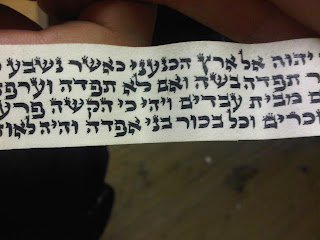A continuation to a point I mentioned in my last post "shiyur moshav of the lamed" - the basic measure-unit in stam is a yud. But this unit may not be a exact square area – highth=width, since the width of the yud may vary, and will be fairly accepted at 0.7k, when the hight is always 1k – the oivei of the kulmus is the width of the line [gagei ha'oisiyos]. So a shiyur yud may be = 1kHigh/0.7kWide. In Alfa Beisa (p. 200, 205. Quoted in Darke Moshe, and Mishnat Sofrim) that the beis should be 3x3 kulmusim highth=width. This is built according to the measure of a standard yud, which is 1x1 kul. As the MS ois yud writes: שיעור גופה מלא קולמוס אחד ולא יותר שלא תדמה לרי"ש The guf of the yud is 1k, no more, so it won't resemble a reish. Obviously, the MS is speaking about the width of the yud, not its hight, because it shouldn't resemble a reish! (not a vav). Accordingly, the regular BY csav today is built on a structure of exact square, the yud 1x1k, th...













